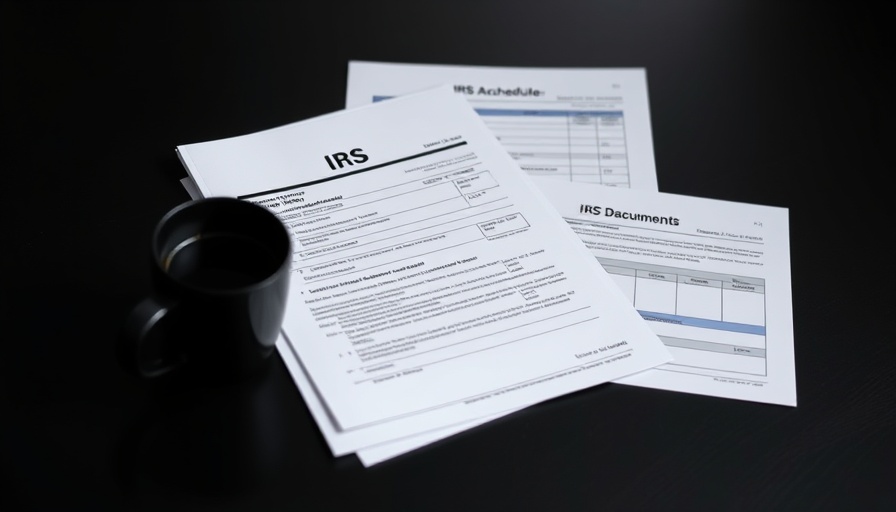
Understanding IRS Tax Forgiveness Programs
Owing back taxes can feel overwhelming, and many taxpayers find themselves in a stressful situation. However, the Internal Revenue Service (IRS) provides several programs designed to facilitate tax relief for individuals facing significant financial hardship. While these forgiveness programs won't completely eliminate debt overnight, they can offer much-needed breathing room by reducing payment amounts or even settling part of what you owe.
What Does Tax Debt Forgiveness Offer?
Tax debt forgiveness can be a lifeline for those grappling with serious financial distress. The IRS’s various programs allow qualifying taxpayers to negotiate their debts under specific circumstances. It's important to note that forgiveness doesn’t equate to an exit from your obligations; it merely grants leniency. Interest and penalties can continue to accrue unless a specific exclusion for relief is approved, so understanding the nuances of these programs is essential.
Key IRS Programs for Debt Reduction
The IRS provides several options for individuals hoping to decrease their outstanding tax obligations:
- Offer in Compromise (OIC): This program lets you settle your tax debt for less than what you owe if you can demonstrate that full repayment would cause financial hardship. To apply, you'll need to file all necessary tax returns, fill out IRS Form 656 along with Form 433-A (or 433-B for businesses), pay a non-refundable application fee, and make an initial payment based on your offer. The IRS reviews these offers thoroughly, taking several months, and not every proposal will get approved.
- Currently Not Collectible (CNC) Status: If you're struggling to pay anything at all, the CNC status may be your best option. It halts IRS collection efforts like wage garnishments or bank levies. Qualifying for CNC requires providing comprehensive financial records demonstrating that your income cannot meet basic living expenses. Like the OIC, interest and penalties still accumulate while you are in this status.
- Penalty Abatement: If you have a valid reason for late payments, the IRS may waive penalties. Common justifications include serious illness, natural disasters, loss of records from uncontrollable events, or family tragedy. Requests for this relief can be made through a letter or IRS Form 843, along with supporting documentation.
Alternative Strategies for Paying Off Tax Debt
If you don't qualify for the more formal forgiveness options, there are still several ways to manage your tax obligations effectively. Here are some viable alternatives:
- Installment Agreements: This option allows taxpayers to pay their tax debt over time in manageable monthly payments. Several variations exist, including Guaranteed Installment Agreements for smaller debts (under $10,000) and Streamlined Installment Agreements for balances up to $50,000.
Before committing to any repayment strategy, it’s crucial to evaluate your entire financial situation, including other debts you may have, such as student loans or credit card debt. Implementing a solid debt management plan can help streamline your obligations while minimizing stress.
The Importance of Recognizing Scams
In the midst of tax troubles, the prospect of relief can be tempting, but it's essential to avoid scams. Fraudulent companies often prey on distressed taxpayers, promising improbable results for hefty fees. Always vet any potential debt relief service thoroughly before proceeding and consult official IRS resources.
Taking Charge of Your Financial Health
Addressing tax debt is about more than just paying what you owe; it is crucial to understand the broader implications of financial health. Analyzing your debt-to-income ratio and actively engaging in debt repayment strategies can reduce your overall stress levels and ultimately improve your credit score over time. Moreover, building an emergency fund while managing debt can serve as a cushion against unforeseen financial challenges.
Conclusion: Moving Forward
Taking the first step to resolve your tax debt can be daunting, but IRS tax forgiveness programs and effective debt management strategies can help lighten the load. Whether exploring an Offer in Compromise, assessing your eligibility for Currently Not Collectible status, or considering other payment options, there's a path forward. To get started on reducing your debt and improving your financial situation, reach out to a certified tax advisor or visit IRS resources to ensure you're on track for a debt-free future.
 Add Row
Add Row  Add
Add 



Write A Comment